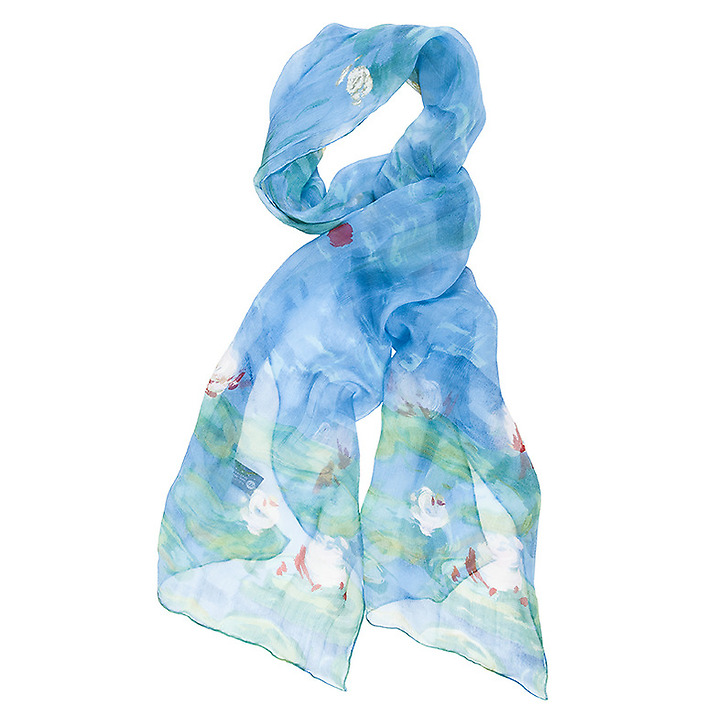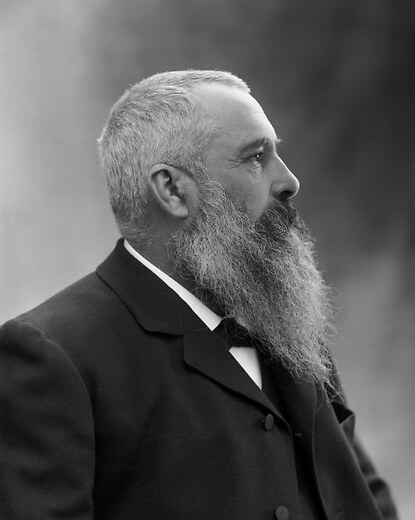Water lilies stole - Orangerie Museum
CH100342
This silk stole is inspired by the fascinating Nymphéas (water lilies) of Claude Monet.
For nearly thirty years Monet was interested in the representation of the same plant species: the water lily. The first canvases, painted from 1897 onwards, are small, almost square. More than two hundred and fifty...
Read more
This silk stole is inspired by the fascinating Nymphéas (water lilies) of Claude Monet.
For nearly thirty years Monet was interested in the representation of the same plant species: the water lily. The first canvases, painted from 1897 onwards, are small, almost square. More than two hundred and fifty canvases were painted on this theme: nature in its primordial forms: water, light, vegetation, flower stains. Wishing to participate in the Victory of 1918, Monet proposed to offer two large panels to the State and asked Clémenceau to act as a middleman: these eight vast compositions were eventually installed, after the death of the painter but according to his instructions, in two large oval rooms of the Orangerie.
The Giverny estate was the place where the artist Claude Monet created his most remarkable group of compositions, the Water Lilies, which became the central theme of his paintings throughout the seasons. These masterpieces bear witness to the unique sensitivity of the painter who, throughout his career, was able to capture with virtuosity the subtle variations of light on his water lily pond.
Finish: Hand-rolled hem.
Hand-rolled is a refined hemming technique based on the skills of hand sewing.
The craft of roulotting, once widespread in France, is now disappearing. Only a few well-known brands still practice it.
Close
Sold by GrandPalaisRmn







